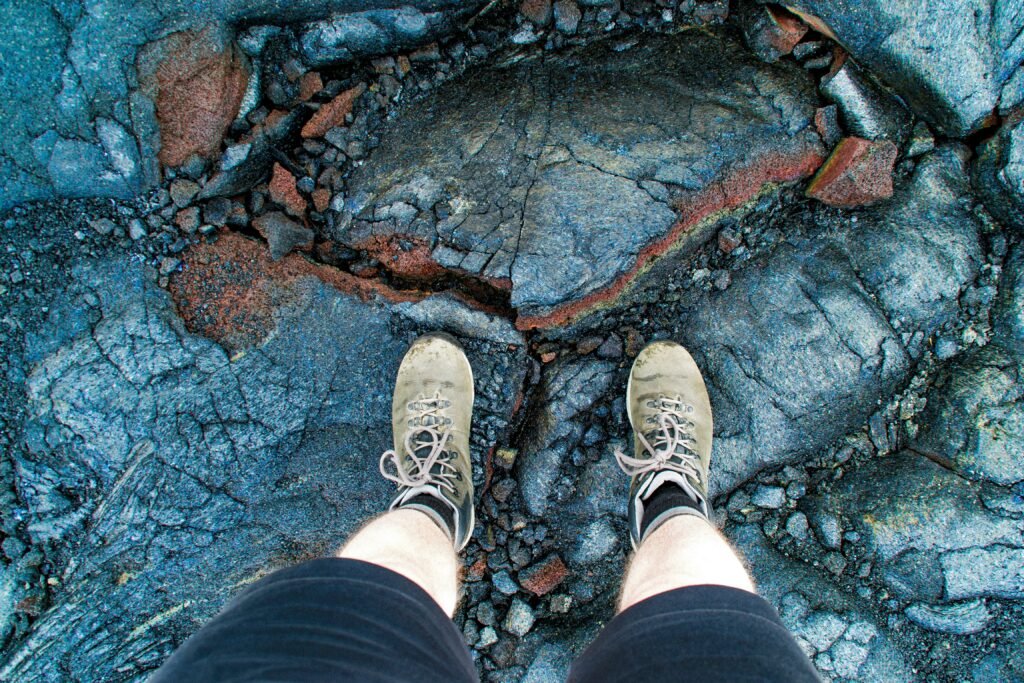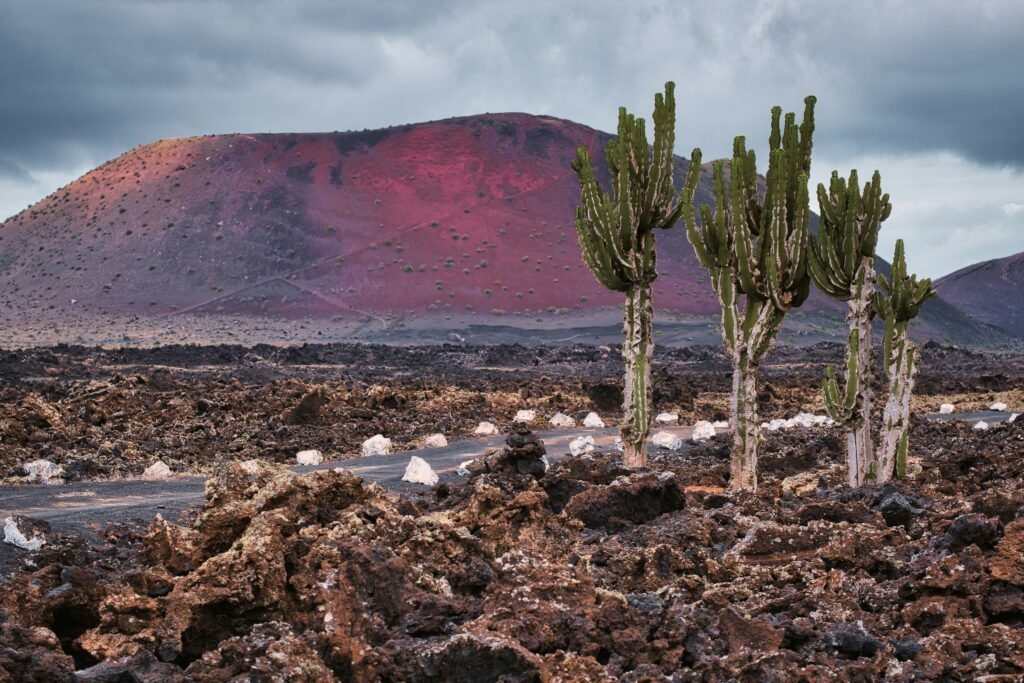Lava Rock: Nature’s Stunning Creation
Introduction
Lava rock is one of nature’s most fascinating creations. This volcanic wonder captures the imagination with its rugged beauty and unique textures. Formed from molten lava that cools and solidifies, it has a story to tell—one of fire, earth, and transformation.
Whether you’re an avid gardener, a DIY enthusiast, or someone looking for durable materials for your home projects, lava rock offers something special. Its striking appearance adds character to any landscape while serving practical purposes in various applications. Dive into the world of lava rock and discover why this natural gem deserves a place in your outdoor spaces and beyond!

What is Lava Rock?
Lava rock, also known as volcanic rock or scoria, is a natural material formed during volcanic eruptions. When lava spews from a volcano and cools rapidly, it hardens into striking pieces of porous stone.
What makes lava rock truly unique is its lightweight yet durable nature. The air pockets created during the cooling process give it that distinct texture and make it easy to handle for various uses.
This remarkable stone comes in different colors, ranging from deep blacks to fiery reds. Its appearance can vary significantly based on the minerals present in the original magma.
People often admire lava rock not just for its looks but also for its versatility. It plays an essential role in landscaping, engineering projects, and even art installations. Each piece tells a tale of geological transformation forged over centuries beneath our feet.
How Lava Rock Forms
Lava rock, also known as volcanic rock, originates from molten lava that erupts from a volcano. When the magma reaches the Earth’s surface and cools rapidly, it solidifies into various forms.
The cooling process can happen quickly or slowly depending on environmental conditions. In fast-cooling scenarios, gases get trapped in the lava, creating vesicles—tiny air pockets—that give lava rock its distinctive texture.
Conversely, when lava cools more gradually underground, it transforms into denser types of igneous rocks. This slower process allows for crystal formation within the stone.
Different eruptions produce different types of lava Rock based on their chemical composition. Each type contributes uniquely to the characteristics of the resulting rock formations found in nature today.
Types of Lava Rock
Lava rock comes in various forms, each with its unique characteristics. The most common types include pumice and scoria.
Pumice is light and porous, thanks to rapid cooling during volcanic eruptions. It often floats on water due to its low density. This makes it a favorite for gardening and landscaping projects.
On the other hand, scoria has a darker hue and a more rugged texture. It’s denser than pumice but still retains excellent drainage properties. Scoria is commonly used in construction because of its strength.
Another interesting type is basalt lava rock. Formed from solidified lava flows, basalt is extremely durable and ideal for creating striking outdoor features or pathways.
Obsidian presents an entirely different appeal with its glassy finish, adding elegance wherever it’s placed. Each type offers distinct advantages depending on the intended use.

Uses of Lava Rock
Lava rock is a versatile material with a wide range of applications. In landscaping and gardening, it adds visual interest while improving drainage. Its porous nature helps retain moisture around plants, making it an eco-friendly choice for flower beds.
In construction, lava rock serves as an efficient insulating material due to its lightweight and heat-resistant properties. Builders often use it in brick-making or as aggregate in concrete mixes.
For outdoor enthusiasts, lava rock enhances fire pits and barbecues. It retains heat effectively and creates a striking aesthetic element that complements any backyard design.
Additionally, lava rock plays a crucial role in water filtration systems. Its unique texture traps impurities while allowing water to flow freely through, ensuring clean and safe drinking water. This natural filter can be found in various environmental setups worldwide.
1. Landscaping and Gardening
Lava rock is a popular choice for landscaping and gardening enthusiasts. Its unique texture and striking colors add depth to any outdoor space.
Using lava rock as mulch helps regulate soil temperature. It also retains moisture, reducing the need for frequent watering.
Gardeners appreciate its lightweight nature, making it easy to transport and arrange. Unlike traditional mulch, it won’t decompose over time, ensuring long-lasting beauty.
In addition to aesthetics, lava rock provides excellent drainage in planting beds. This feature creates an ideal environment for many plants that thrive in well-drained conditions.
Furthermore, its porous structure encourages beneficial microorganisms while preventing weeds from taking root.
With various sizes available, you can easily find the perfect fit for your garden’s style and needs. The versatility of lava rock makes it an attractive option for both functional gardens and decorative landscapes alike.
2. Construction Material
Lava rock has gained popularity as a versatile construction material. Its lightweight yet sturdy characteristics make it ideal for various building applications.
The porous nature of lava rock provides excellent insulation. This helps regulate indoor temperatures, ultimately saving on energy costs. Builders appreciate its durability against harsh weather conditions too.
Additionally, lava rock is often used in masonry and concrete mixes. It enhances the overall strength and aesthetic appeal of structures. The unique textures and colors add character to any project.
Another advantage lies in its fire-resistant properties, making it suitable for fireplaces or outdoor spaces where heat exposure is a concern. Contractors value this feature when selecting materials that ensure safety without sacrificing style.
As a sustainable option, using lava rock contributes to eco-friendly construction practices by reducing reliance on synthetic materials while embracing natural resources.
3. Fire Pits and Barbecues
Fire pits and barbecues are the heart of outdoor gatherings. Using lava rock in these settings enhances both aesthetics and functionality.
The porous nature of lava rock allows for excellent heat retention. This means your fire pit stays warm longer, making chilly evenings more enjoyable. Additionally, it provides a striking contrast against glowing flames, creating an inviting atmosphere.
For barbecues, lava rock serves as a perfect base layer. It helps distribute heat evenly across the grill surface, ensuring that food cooks perfectly every time. Plus, its natural composition minimizes flare-ups from grease or fat drippings.
Beyond performance benefits, using lava rock is environmentally friendly. As a natural product sourced from volcanic activity, it doesn’t contribute to harmful emissions like synthetic alternatives might do.
Choosing lava rock for fire pits and barbecues not only boosts efficiency but also adds an earthy charm to any outdoor space.
4. Water Filtration
Lava rock serves as an excellent medium for water filtration. Its porous texture allows it to trap sediment and impurities effectively. This natural material is more than just aesthetically pleasing; it plays a crucial role in maintaining clean water.
When used in filtration systems, lava rock filters out harmful contaminants. It has a unique ability to promote the growth of beneficial bacteria that aid in breaking down organic matter. This biological process enhances the overall quality of the water.
Moreover, lava rock offers durability and longevity compared to synthetic materials. It’s resistant to degradation from chemicals commonly found in water sources, making it a sustainable choice.
Many eco-friendly systems utilize this volcanic stone due to its low maintenance requirements and effectiveness over time. The use of lava rock not only ensures clearer water but also supports environmentally responsible practices.
Environmental Benefits of Lava Rock
Lava rock holds a special place in the environmental landscape. Its porous structure allows for excellent water retention, making it a sustainable choice for gardening and landscaping. This feature helps reduce the need for frequent watering, ultimately conserving precious resources.
Additionally, lava rock promotes healthy soil aeration. By improving drainage and preventing compaction, it creates an optimal environment for plant roots to thrive. This contributes to healthier ecosystems overall.
Another significant benefit is its role in erosion control. When used on slopes or hillsides, lava rock can help stabilize soil and reduce runoff during heavy rains.
Moreover, employing natural materials like lava rock reduces reliance on synthetic options that might harm the environment. It’s not just beautiful; it’s also a smart choice for eco-conscious projects seeking balance with nature’s rhythms.
Conclusion
Lava rock is a fascinating and versatile natural material with a rich history and numerous applications. Its beauty, durability, and unique properties make it a popular choice for various uses. From enhancing the aesthetics of gardens to serving as an essential component in construction projects, lava rock offers something for everyone.
With its ability to withstand high temperatures, it’s no wonder that people turn to lava rock for fire pits and barbecues. Additionally, its porous nature provides effective filtration solutions in water management systems. Beyond practical applications, this stunning creation from nature contributes positively to the environment by promoting biodiversity and improving soil quality.
Whether you’re looking to elevate your landscaping or incorporate sustainable materials into your home improvement projects, lava rock stands out as an exceptional option worth considering. Embrace the beauty of lava rock and witness how it can transform spaces while benefiting our planet at the same time.






